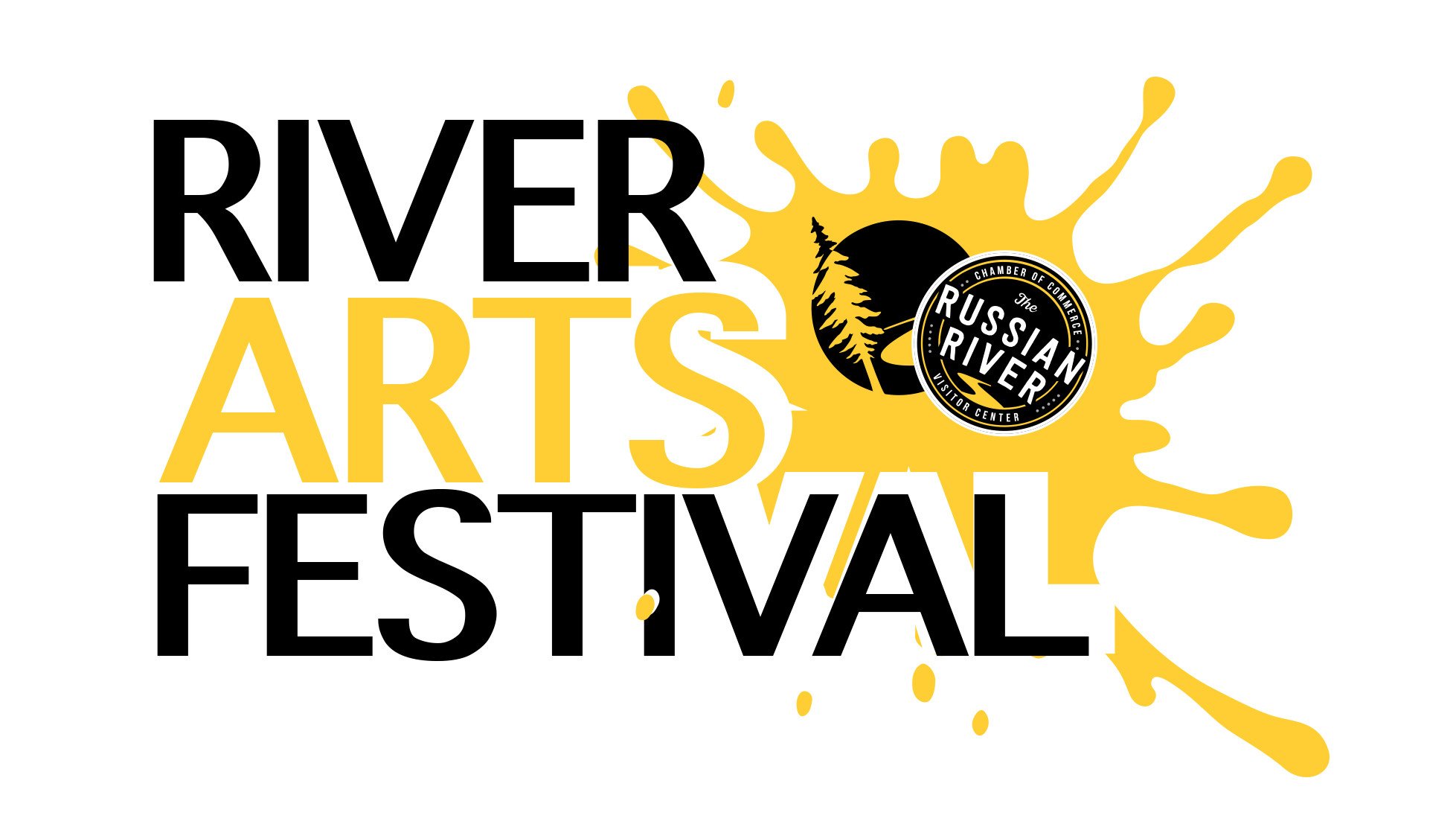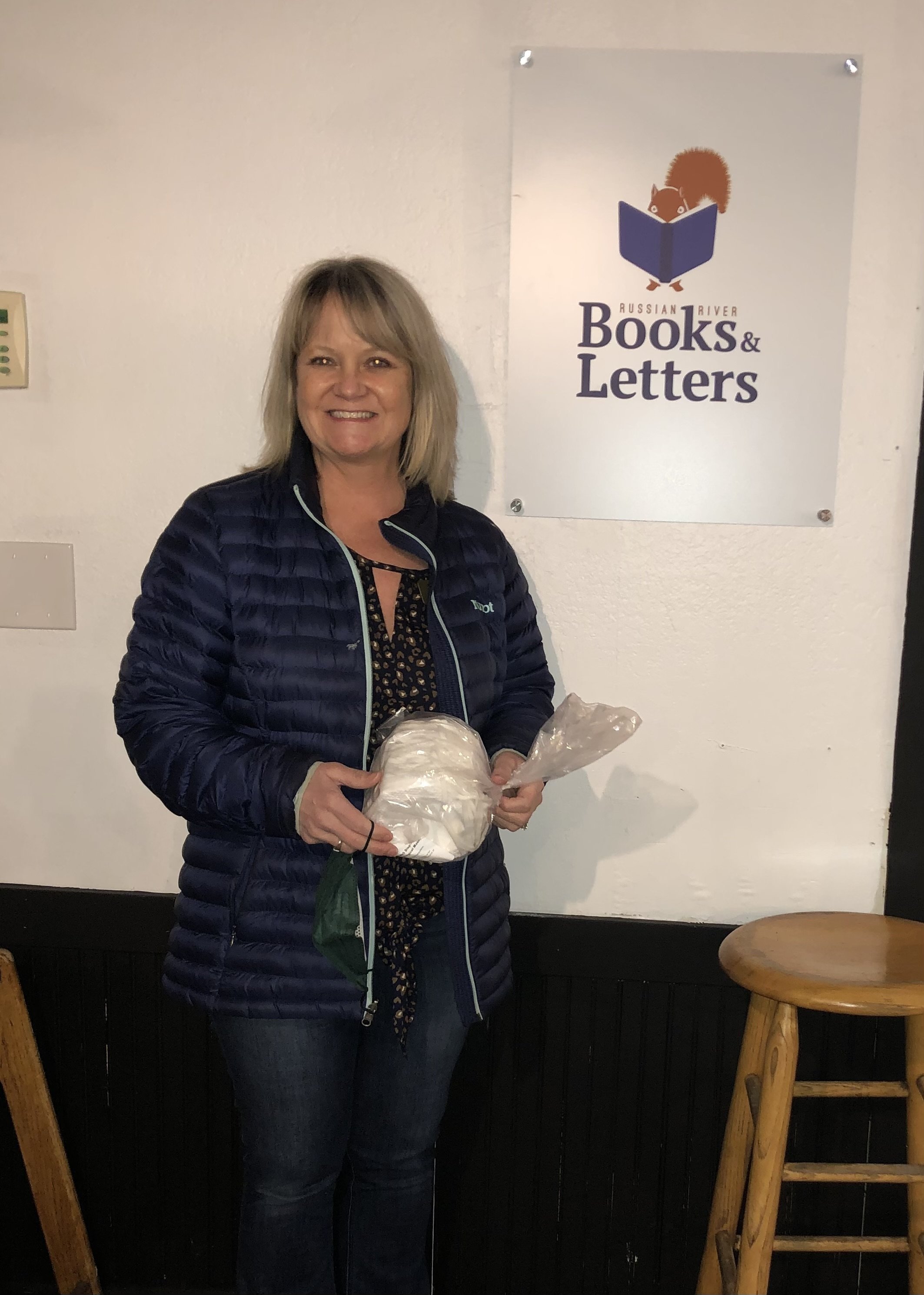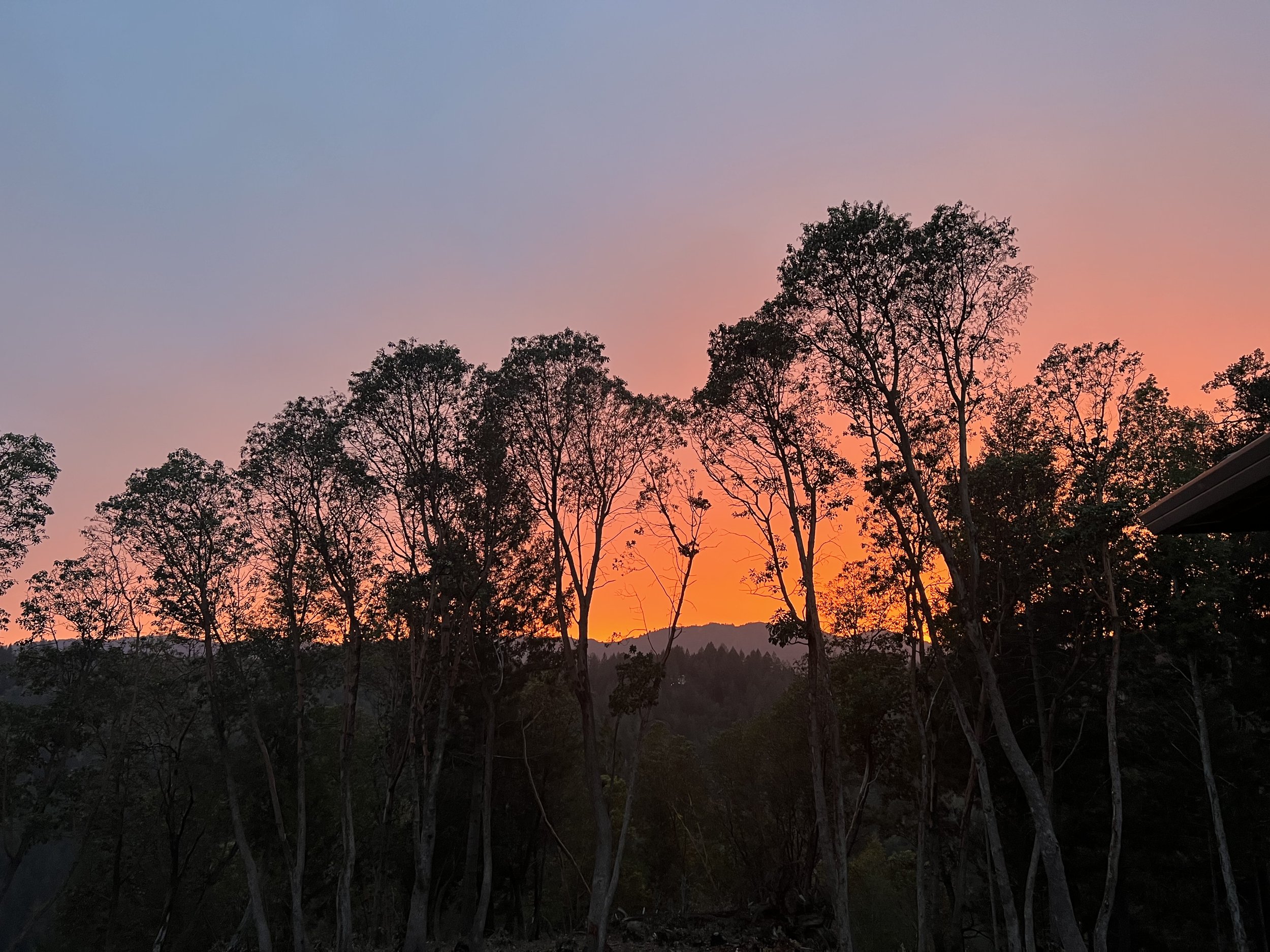
NEWS YOU CAN USE
Upcoming Fire Safety events will be listed here along with links for information on events you may have missed!
This website contains links to other third-party websites. Such links are only for the convenience of the reader, user or browsers. Firesafe Guerneville and its members do not recommend or endorse the contents of the third-party sites. This project is funded, in part, by the Sonoma County Board of Supervisorsnd its members do not recommend or endorse the contents of the third-party sites. FireSnot recommend or endorse the contents of t
Announcement:
Tony Goodwin KN6KIC WRHT379 & Bob Dozor K3FUL WRJD829 will held the first of a three-part GMRS training on Friday, May 6th at 6 pm via Zoom. This is intended to jump-start neighborhood emergency communication (when cell phones are down).
Click on this link to see Part 1of the recent GMRS training. Part 1 Recorded Training
For Part 2 of the training, we will meet with Neighborhood groups in their neighborhoods with radios in hand.
Part 3 will consist of mentoring each group in holding regular GMRS nets.
Missed the 2022 Wildfire Readiness Week presentations? Thanks to Sonoma County’s 5th District staff, you can watch several of the talks by clicking the link below.
WILDFIRE & FOREST RESILIENCE TASK FORCE MEETING Click on the link for their website and updates: CA Wildfire & Resilience Task Force
PRE-REGISTRATION IS REQUIRED – REGISTER HERE!
WILDFIRE & FOREST RESILIENCE TASK FORCE MEETING
Thursday, May 5
9:30 | Registration
10:00 | Resource Fair – Hosted Table Discussions on Wildfire Resilience Themes
11:30 | Lunch (provided)
1:00 – 4:30 | Wildfire & Forest Resilience Task Force Meeting
4:30 – 6:30 | Local Beer & Wine Reception
DATE
May 5, 2022
TIME
All day
Task Force Meeting FIELD TOURS
PRE-REGISTRATION IS REQUIRED – REGISTER HERE!
WILDFIRE & FOREST RESILIENCE TASK FORCE MEETING: FIELD TOURS throughout SONOMA COUNTY
Friday, May 6, 8 am – 2 pm
Building Sonoma Valley Wildfire Resilience through State, Local, and Non-Profit Partnership
Expo: Zero Emissions, Air District Programs, Biomass Business Competition
Wildfires in Sonoma County: Historical Context, Recent Events, and Preparedness into the Future
Redwood Resilience: Post-fire Conditions and Management in State and Regional Parks
A Living Laboratory for Wildfire and Forest Resilience: Applying Western and Indigenous Science to Land and Water Stewardship
Private Landowner Resources: Casul Ranch in Western Sonoma County
Wildfire Risk Reduction, Water Supply Resiliency, FloodMAR, Tribal Stewardship, River and Ecosystem Restoration
RELATED LINKS
DATE
May 6, 2022
TIME
All day
Come out to the RiverArts Festival Saturday, May 7, 2022 from 4:00 PM-8:30 PM in Downtown Guerneville! FireSafe Guerneville will be there. Meet our volunteers and pick up wildfire readiness information. Get your very own lawn “chute” with paper bags to help you collect cuttings as you clean up around your yard. Join the Guerneville Radio Net and learn about the Overlook Repeater.
The Cloverdale Fire & Earthquake Expo 2022! The Sonoma County Library hosted an arts and crafts table.
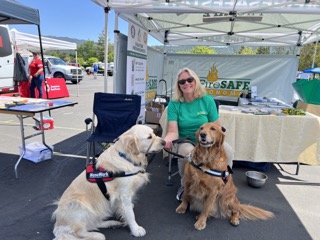
Nose Dogs! These Older Retrievers are therapy animals being trained to identify accelerants in arson cases.
Damian Boune being interviewed about Watch Duty

The FireBozz water canon in action.
The Watch Duty Team was ready to help you download the app and explain how they do it!
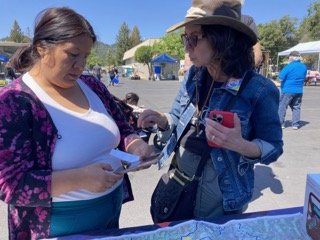
A volunteer from FireSafe Guerneville helps a Spanish-only speaker download the Watch Duty app.m Watch Duty will soon be available in Spanish!
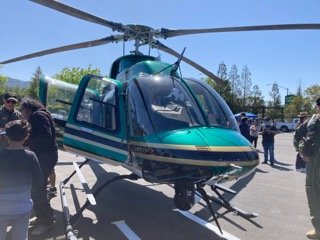
Henry 1 did a rescue demo.
Rainwater Rebate Kick-Off by Daily Acts! Join the webinar on Thursday, May 5, from 5:30-7:00 pm: Register for webinar here
Here is an example of rain water catchment being used to save water for fire suppression efforts. This 2600 gallon tank collects rainwater off a barn for this off-grid property.
The Lower Russian River MAC is hosting a special meeting to discuss reducing risk of forest fires from homeless encampment warming and cooking fires on Thursday, April 21, 2022 at 5:30 PM. Here is the link to the Zoom meeting and agenda:
Risk mitigation from forest fires zoom link
• Supervisor Lynda Hopkins
• Report by the Lower Russian River Citizens Advisory Committee
• CalFire Chief Ben Nicholls and Sonoma Fire Chief Cyndi Foreman addressing risk mitigation from forest fires.
• Sgt Tom McNeil, Sonoma County Sheriff, Guerneville Substation on fire risk mitigation from encampments, warming and cooking fires
• West County Mapping project
• Paul Osmundson of the Community Development Commission, County of Sonoma, on housing solutions including George’s Hideaway.
Have you been dropped by your insurance company lately? A free webinar on keeping your home insured when your options are limited and premiums are climbing is being offered by United Policyholders (website) a non-profit consumer organization. The webinar is “How to Shop When You’ve Been Dropped” and happens on April 19,2022. This webinar will cover:
What to do if your insurer non-renews you.
Is it safe to insure your home through a company you’ve never heard of?
What is the CA FAIR Plan and what options does it offer for insuring a home?
Questions to ask to get adequate protection in place for your home.
Learn more about wildfire risk and insurance via this webinar hosted March 10, 2022. Click on the link to go to the recorded webinar.
Or read the notes with website links to each speaker’s topic, below.
Join us Thursday, March 10 at 5:30 p.m. for a Virtual Town Hall on Wildfire Risk and Insurance, hosted by Sonoma County Supervisor Lynda Hopkins and the University of California Cooperative. Discussions will address concerns around wildfire risk and insurance, with topics including:
· What can we do to reduce our risk of losing our insurance coverage?
· What does the scientific research tell us about how can we reduce the risk to our lives and property from the threat of wildland fire?
· What is on the horizon from the state?
· What can the county do to help landowners manage their wildfire risk?
Speakers include:
· Dr. Stephanie Larson, UC Cooperative Extension Sonoma County Director and Livestock Range Management Advisor
· Michael Newman, Insurance Institute for Business and Home Safety & David Gorham
· Chief Ben Nicholls, CalFire
· Sashi Sabaratnam, UC Cooperative Extension Wildfire Vegetation Mitigation Program Manager
· Caerleon Safford, Permit Sonoma
5:30 PM - Present were Supervisor Lynda Hopkins and the above speakers.
After a brief introduction by Supervisor Hopkins, the meeting was directed by Sashi Sabaratnam. She commented that there is a new Vegetation Mitigation Program in place through the UC Coop. Extension. The IBHS (Insurance Institute for Business and Home Safety) would present information about Prepared Home Certification. CalFire’s topic would be defensible space zones. Permit Sonoma’s Wildfire Risk Reduction Program that focuses on Inside Out/Outside In methods to reduce fire risk.
Dr. Stephanie Larson, UC Coop. Extension Sonoma County Director and Livestock Range Management Advisor, discussed the Wildfire Fuel Mapper system. This is for use online by owners of 3 acres or more and can help them learn about vegetation issues, slope of property, aspect of property, and fire history in their area. The website is: https://wildfirefuelmapper.org>resources She also discussed the Wildfire Resilience Planner for long term planning that considers carbon capture, water retention, etc. This website is: https://databasin.org>groups It has many maps to help owners see what their area’s issues are. And another website connects property owners to livestock owners for hiring animals to graze overgrown properties. Website is: https://sonomafb.org>match-graze
Michael Newman, Senior Director of the IBHS (Insurance Institute for Business and Home Safety in Wildfires) discussed actions that homeowners can take to make their homes safer when there is wildfire, high wind, heavy rain, or severe hail. Their website is: https://ibhs.org/about-ibhs/ibhs-researchcenter They describe how they test full size structures to find what can be done to make them safer under extreme conditions. Their research center is in Richburg, SC. They apply their findings to homes and to communities through ISO Public Protection Classifications that insurance companies use in setting rates. The website shows the criteria at: https://www.isomitigation.com>ppc Other ways for homeowners and communities to qualify for reasonable insurance rates is through becoming a Firewise Community or creating a Firesafe Council. But the key is for homeowners to apply the findings about materials that will help lessen severity of damage to their homes. A very useful website for self-screening your home and creating a Designated Prepared Home 2022 is at: https://ibhs.org/wildfire-prepared-home/ There is a fee of $100 to request a home exterior inspection through IBHS.
Michael spoke of how home vents fitted with ember resistant screening can reduce flame spread. Roofs should be Class A material. The base of a home should have at least 6” vertical, non-combustible material from ground to bottom of home wall materials. Maintain bare dirt under decks. Clean debris from spaces between deck boards regularly. Enclose under-deck area with ember resistant screening, use non-combustible fencing (no wood), no outbuildings near home, keep yard clear of debris. If possible, use non-combustible materials for stairways that are attached to the exterior of the home.
CalFire Chief Ben Nicholls spoke about Defensible Space Zones around homes. Zone 0 (0-5”) will become part of the list in Jan., 2023. For now there is Zone 1 that covers 0 – 30’ which he called the “lean and green” zone with all dead material removed, shrubs next to house windows, the duff under decks and between deck boards. No dry, dead material should remain. Zone 2 covers 30 – 100’ or to property line (whichever is closer) which he called the reduced fuels zone. Things to think about removing are combustible fencing, decks and arbors, lattice work. Other items such as garbage cans, recycling cans should be placed away from house. If you have a propane tank, it should be sitting on bare dirt, no vegetation near it for a perimeter of 10’. He also commented that slope of property can have an effect on spread of fire (uphill or down). He recommended home owners view CA AB38 and Sonoma County Statute 13A regarding regulations about property maintenance. (See attached page.)
Caerleon Safford, from Permit Sonoma, spoke about the Wildfire Risk Reduction Program. This focuses on two aspects of a home: Inside Out which refers to the house structure and defensible space around it; and Outside In which refers to wildfire fuels reduction within the neighborhood through landscape management. Phase 1 ends in spring of 2023. Phase 2 has $3.700 defensible space incentives plus $7,000 for retrofit of structues (home hardening) through FEMA. The FEMA money is still in gov’t. review, so may take a couple of years to materialize.
A whole-community approach at landscape fuels reduction is being proposed through educational outreach, home risk assessments, incentives, and community fuel breaks (i.e. ridge lines). Also the Sonoma County Community Wildfire Protection Plan from 2016 is undergoing an update and should be done by July. Permit Sonoma has a Wildfire Risk Index in Sonoma County website: https://storymaps.arcgis.com>stories And Permit Sonoma has a section on its website: https://sonomacounty.ca.gov>permitsonoma/ called SoCoAdapts that includes project mapping and a statistical tool, as well as current and proposed project areas.
Sashi Sabaratnam summarized the webinar with a reference to the fire triangle considered by firefighters: topography, fuel, wind. And reminded everyone to remember the impact that wildfires have on wildlife and water quality.
Kim Batchelder of Sonoma County AG+ Open Space is the vegetation management coordinator of Open Space. Their website is: https://sonomaopenspace.org He said they have 17 projects this year with grants from CalFire and Permit Sonoma. When you take action, you can reduce risk. Community cooperation is vital, esp. in dense communities like Coffey Park in Santa Rosa to prevent the destruction that occurred during the Tubbs Fire of 2017. That shouldn’t happen again.
Notes from webinar by Lois Lebovich, Secretary/Treasurer, FIRESAFE GUERNEVILLE.
The California Department of Insurance is holding a Public Hearing on Insurance in Wildfire Prone areas. There’s a public comment workshop on April 13, 2022 starting at 1pm. Zoom registration link is here.
United Policyholders (a consumer advocate) has been heavily involved in crafting these rules.
Summary:
"The proposed regulations will require insurers, for the purposes of segmenting rates, creating a risk differential, or surcharging the premium due to wildfire risk, to reflect and take into account specified mitigation factors in their rating plans. The proposed regulations will at the same time provide flexibility to insurers to incorporate additional factors into their rating plans for the purposes of segmenting rates, creating a risk differential, or surcharging the premium due to wildfire risk, provided such factors are substantially related to the risk of wildfire and will not result in rates which are excessive, inadequate, or unfairly discriminatory. The proposed regulations will help to ensure that rates and premiums corresponding to wildfire risk are not excessive, inadequate, or unfairly discriminatory by ensuring the insurer has accurate information upon which the rate or premium is based. For example, the proposed additions will also require insurers to provide certain mitigation and wildfire risk information to applicants and policyholders, and to provide a process by which applicants and policyholders may appeal a wildfire risk score or classification assigned by the insurer.
2022 State Fire Assistance (SFA) Grant Opportunity
The California Fire Safe Council (CFSC) is excited to announce the 2022 State Fire Assistance (SFA) competitive application process for wildfire prevention grants. Funding is provided through a master grant awarded to CFSC by the U.S. Forest Service and is administered through CFSC's Grants Clearinghouse program.
On March 1, 2022, CFSC will begin accepting applications for State Fire Assistance Grants Program. Up to $1,175,000 will be awarded. CFSC will issue sub-awards to successful applicants that support fire risk reduction activities by landowners and residents in at-risk communities to restore and maintain resilient landscapes and create fire-adapted communities. Projects may focus on one or more of the following categories:
Fuel Hazard Mitigation vegetation treatments such as chipping, thinning, burning, or grazing.
Community Hazard Mitigation Planning such as Community Wildfire Protection Plans (CWPP), Firewise assessments, hazard assessments, and similar types of planning activities.
Prevention, Mitigation, and Education such as outreach, mailings, workshops, events, PSAs, and other educational programs.
Application must be submitted no later than April 14, 2022 at 11:59 PM PST. Overview of the grant program, application process, and workshop details are available on the CFSC website at: https://cafiresafecouncil.org/grants-and-funding/2022-sfa-grant-opportunity/
After March 1, 2022, Apply Directly: https://www.zoomgrants.com/zgf/22SFA




